![]()
Robert Murray: 1894 - 1916
My Great Uncle Robert's life was short but he died a hero half way through the First World War. He was the youngest of the three Murray children, born on 11 January 1894. He was seriously wounded near Ypres while rescuing men from under an overturned wagon and he died from his injuries (gunshot wounds in the back, chest and thigh) in Boulogne, France, on 25 February 1916. Buried in Boulogne's Eastern Cemetery, he was posthumously awarded the Military Cross for bravery.
EDUCATION Like his older brother, William, Robert was educated at George Watson's College in Edinburgh, which he entered in 1901 and where he remained for 10 years. While there, in late 1909 or early 1910, he joined the Junior Division of the Officer Training Corps (OTC) as a Cadet.
.....more An OTC document dated 17 May 1912 records his achievements with the Corps while at George Watson's. He spent a total of 2 years and 1 term in the School Corps, during which time he was twice "returned as an efficient", in 1910 and 1911. In November 1911 he was also awarded a Certificate A. His general efficiency was described as "very good". He also received a rating of "fair" in semaphore signalling; and an "Unqualified Table A" in musketry. In 1912, having achieved the rank of Lance Corporal, Robert resigned from the OTC Junior Division and proceeded to Edinburgh University to study law. There he continued his membership of the OTC. After completing his university studies he entered the service of a legal firm. Edinburgh University OTC Battery, Spring 1912 Edinburgh University OTC Battery, Spring 1913 Edinburgh University OTC Battery, Summer 1913 Edinburgh University OTC Battery, Summer 1914 Edinburgh University OTC Battery, Summer 1914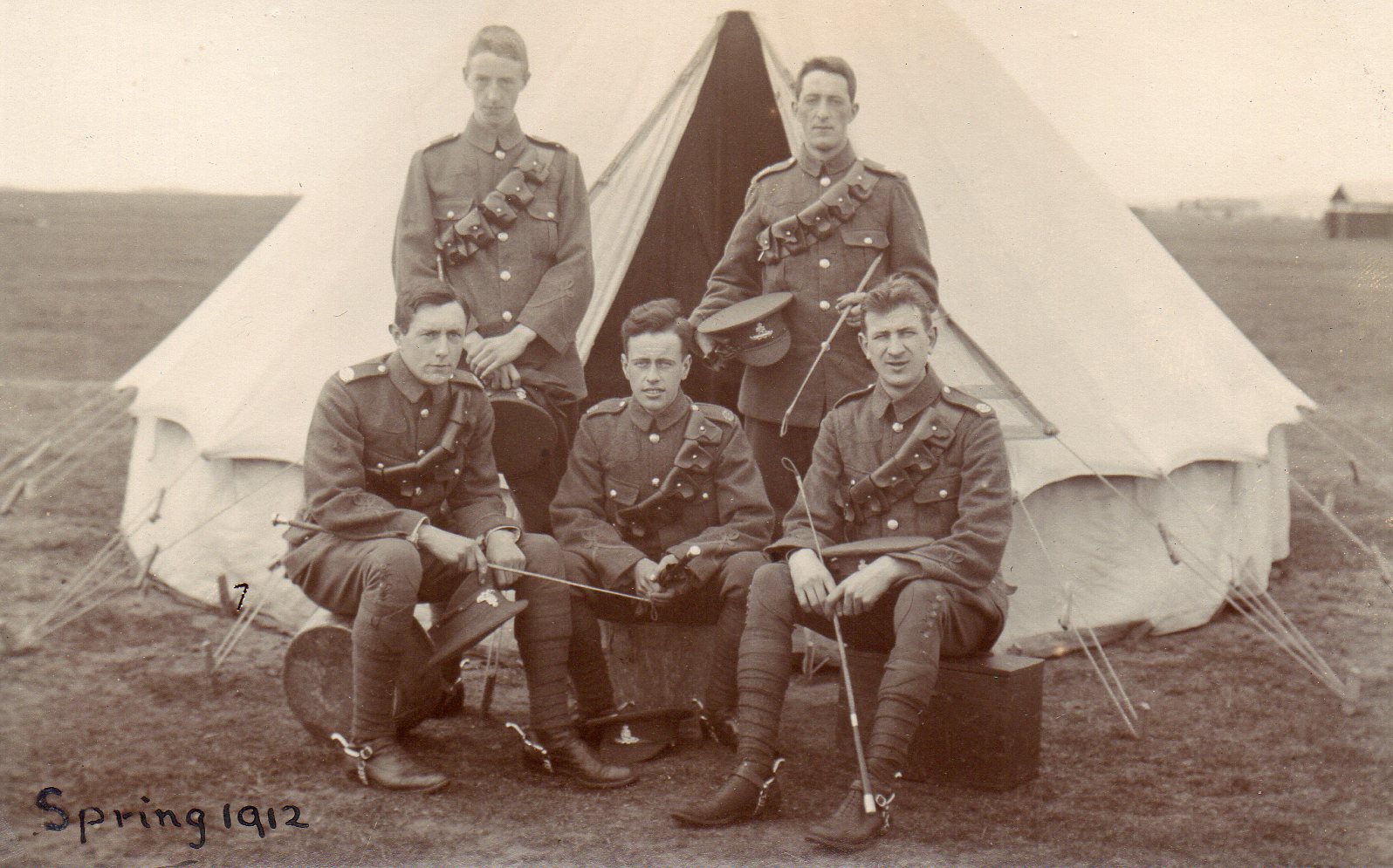
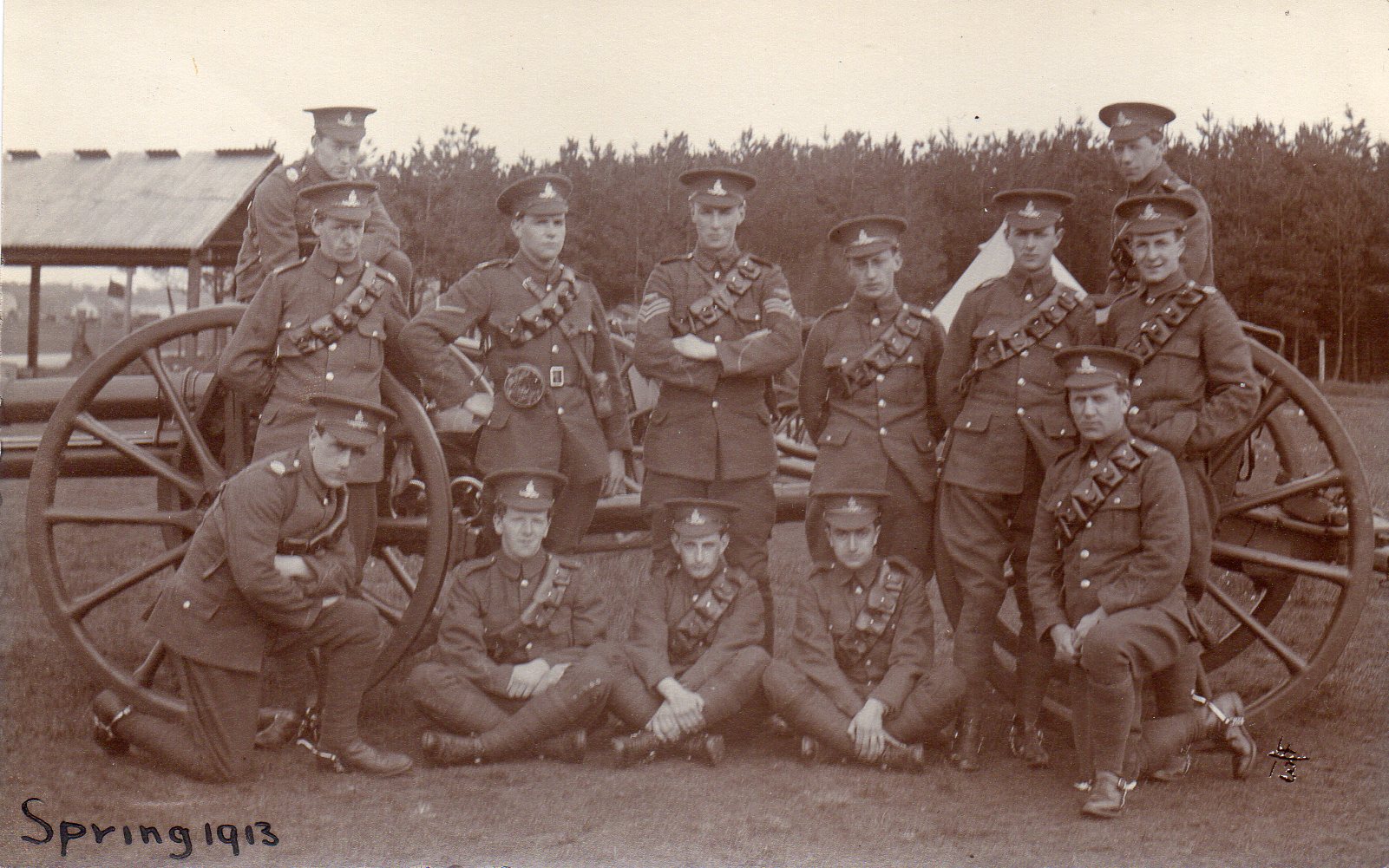
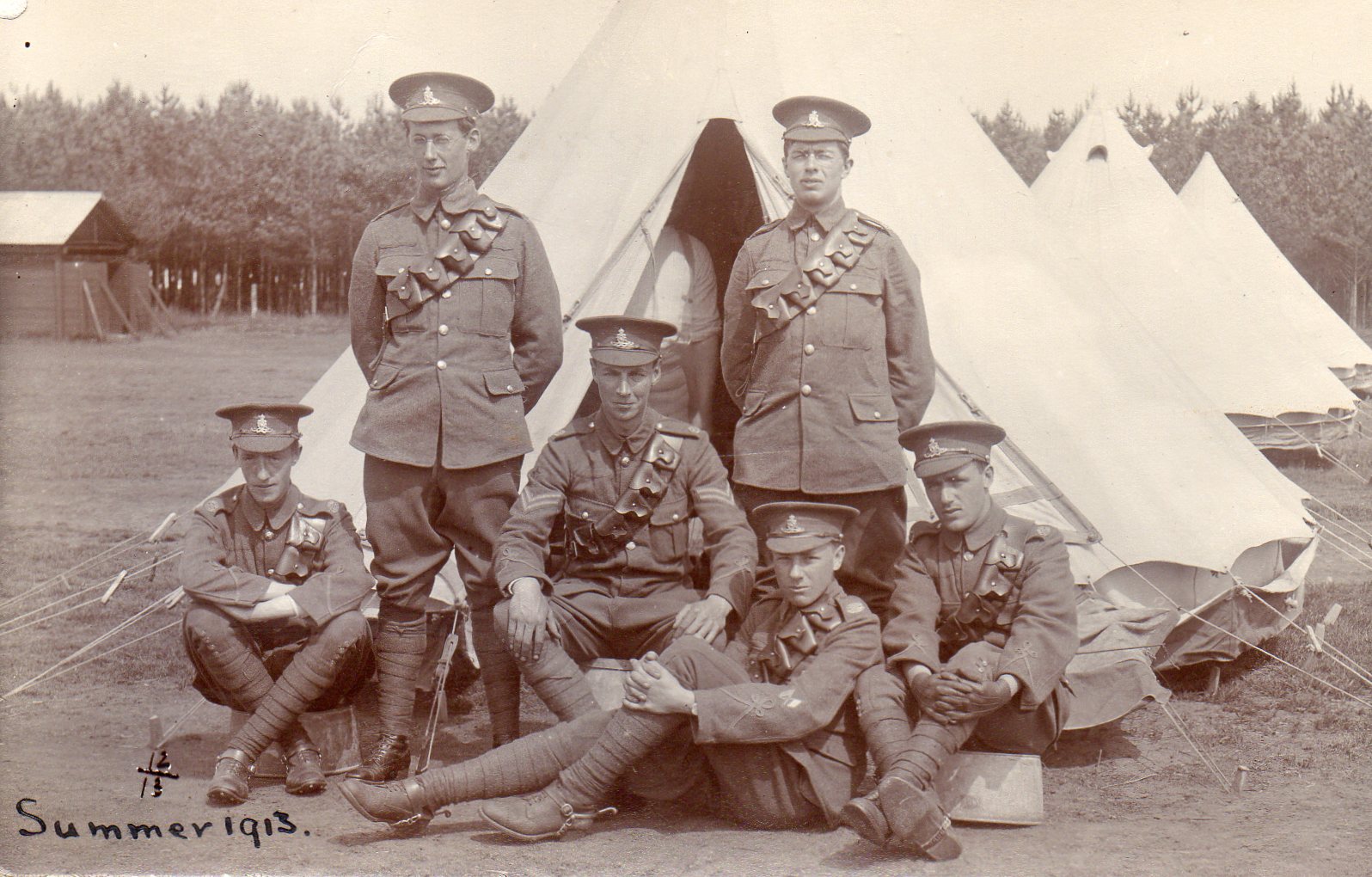
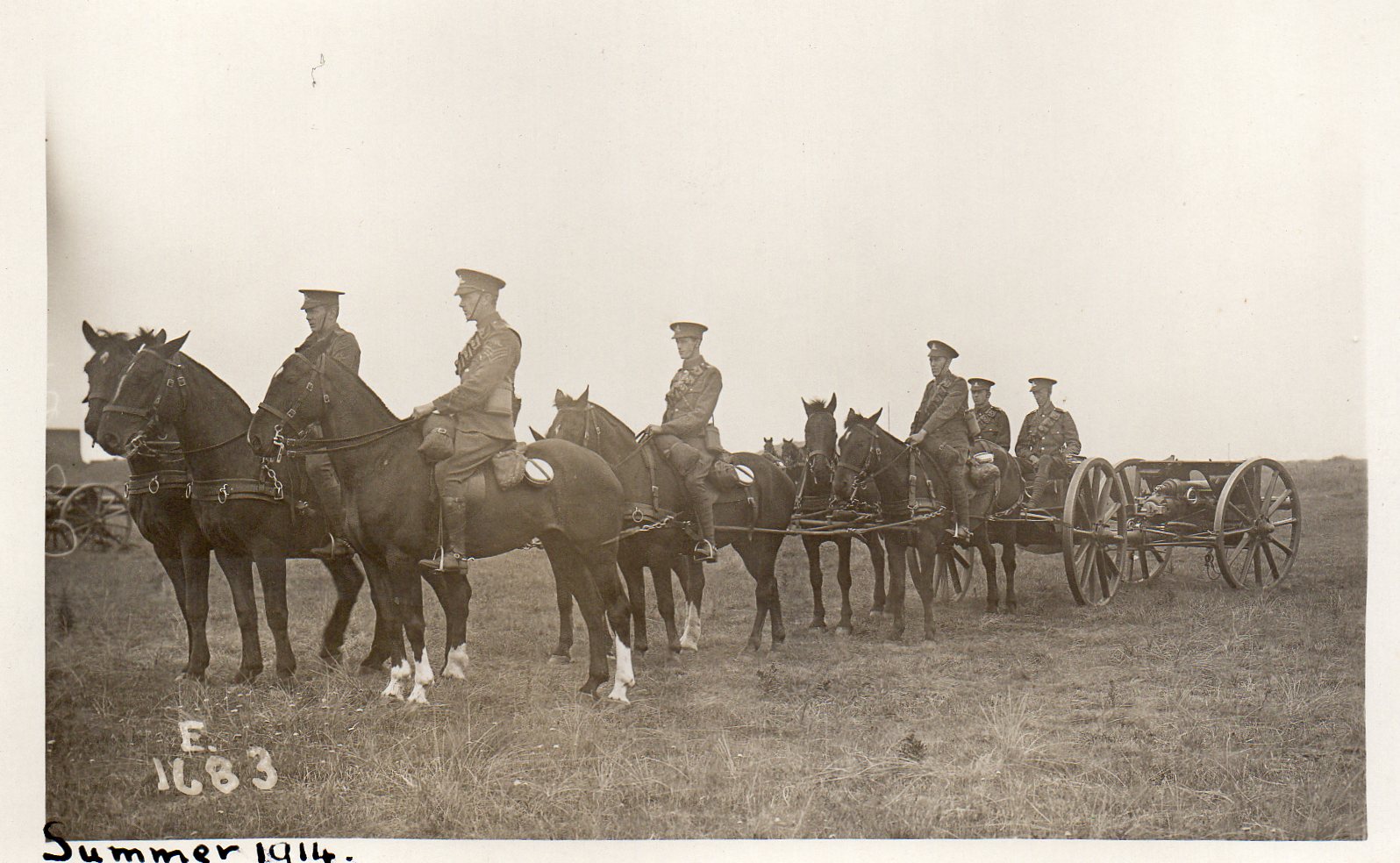
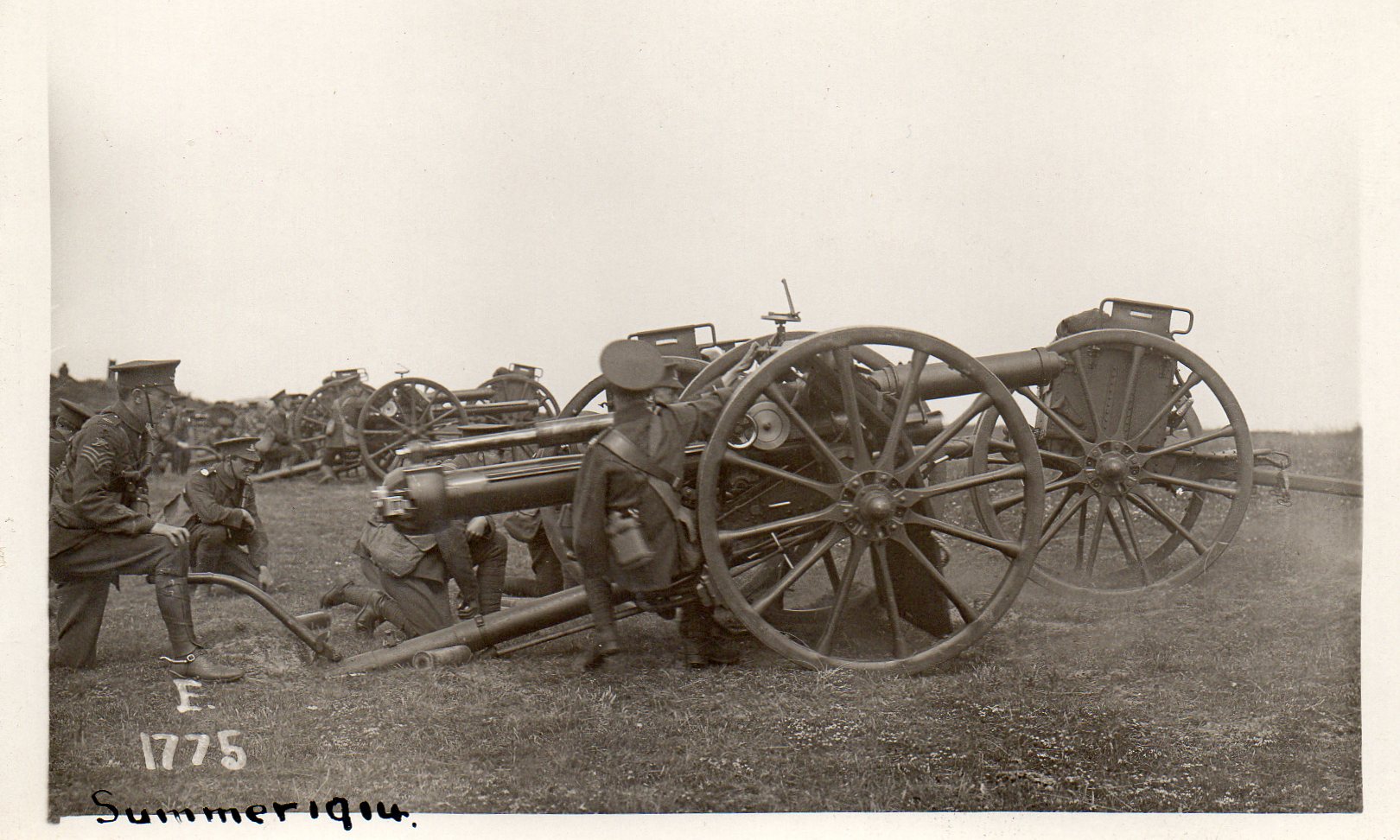
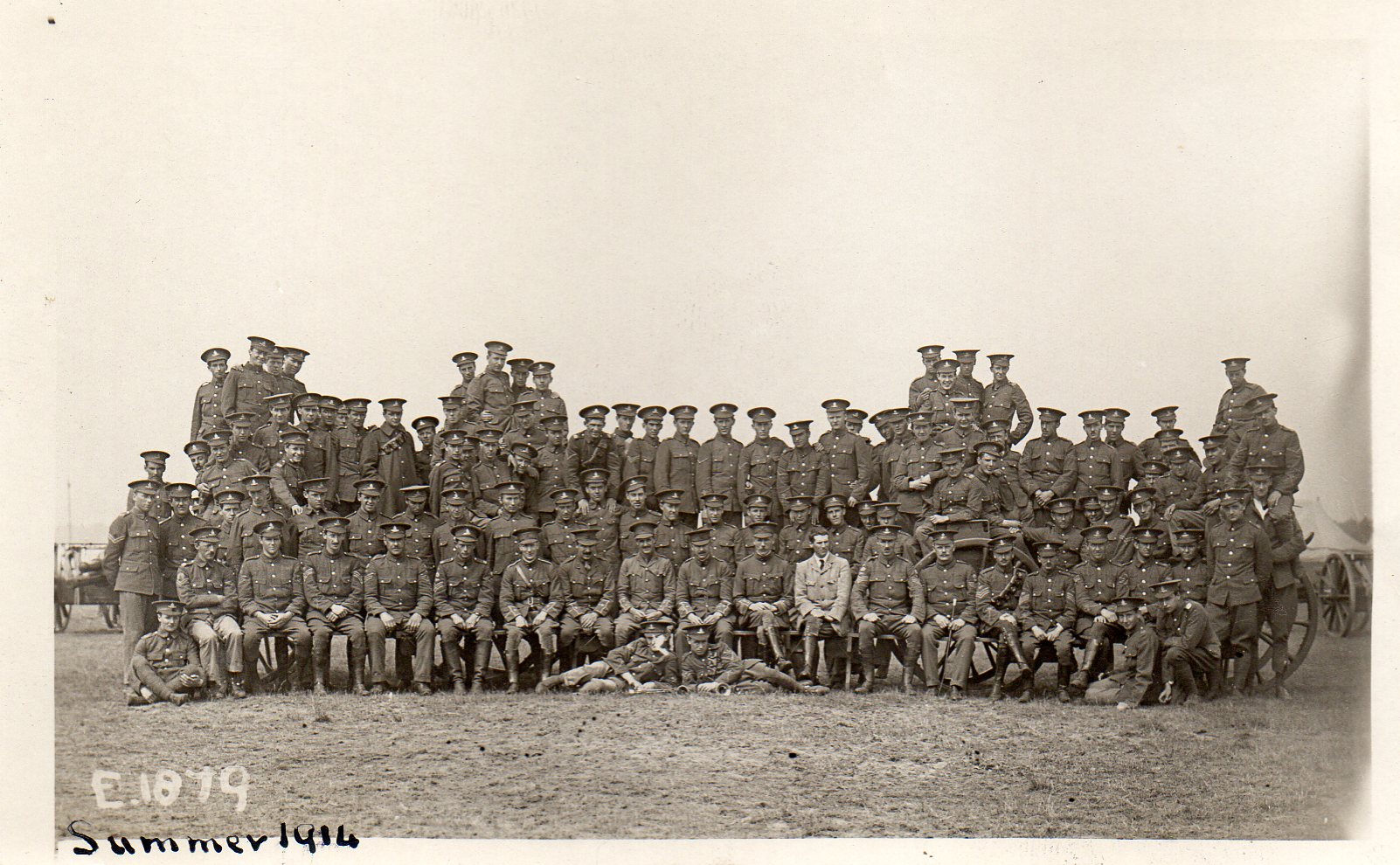
MILITARY CAREER
Available documentation suggests that in the summer of 1914, at the age of 20, Robert embarked on the process of applying for a commission in the Territorial Force. He was quite possibly responding to a poster headed "Edinburgh University OTC" which read: "In case of General Mobilisation are you willing to take a Commission in (a) The Regular Army; (b) The Special Reserve; (c) The Territorial Force. Answer at one to Adjutant, OTC, High School Yards, Edinburgh." On 12 August 1914 a Form MT 348 was filled in for him, certifying his physical fitness as a candidate for a commission. The report, which had to be submitted to the War Office, includes the following information:
Height: 71 inches (ie just under 6 ft)
Chest girth: 35 inches (max); 33 inches (min)
Weight: 119 lbs
Hearing: Normal
Teeth: Good
Vision: 6/6 R&L
Colour vision: Normal
Remarks on fitness: Fit
In a letter dated 5 September 1914 the Director of Military Training at the War Office wrote back acknowledging Robert's application. The letter said that it had not been possible to allot a commission to him in the Territorial Force, "owing to the very large number of applications and the fact that it has been decided that candidates nominated by commanding Officers of Territorial units have a prior claim to those who have not been so recommended." He was therefore advised to approach such an Officer or, alternatively, to consider applying for appointment to a temporary commission in the Regular Army.
It's clear from subsequent letters from the War Office that Robert opted to apply for a temporary commission in the Regular Army. His application was submitted on 19 October, and on 24 October he was sent the following reply: "With reference to your letter dated the 19th instant, and to your application for appointment to a temporary commission in the Regular Army, I am directed to request that you will be so good as to state what experience you have had of horses, and whether you can ride well."
An official document (shown here in 2 halves [1]and [2]) from the War Office that carries the seal of King George V shows that Robert was appointed as an officer in the Land Forces (ie the army) with the rank of 2nd Lieutenant with effect from 30 October 1914. The document reads as follows: "George, by the Grace of God, of the United Kingdom of Great Britain and Ireland and of the British Dominions beyond the Seas, King, defender of the Faith, Emperor of India etc. To Our Trusty and well beloved Robert McDiarmid Murray Greeting: We, reposing special Trust and Confidence in your Loyalty, Courage, and good Conduct do by these Presents Constitute and Appoint you to be an Officer in Our Land Forces from the thirtieth day of October 1914. You are therefore carefully and diligently to discharge your Duty as such in the Rank of 2nd Lieutenant or in such higher Rank as We may from time to time hereafter be pleased to promote or appoint you to of which a notification will be made in the London Gazette and you are at all times to exercise and well discipline in Arms both the inferior Officers and Men serving under you and use your best endeavours to keep them in good Order and Discipline. And we do hereby Command them to Obey you as their superior Officer, and you to observe and follow such Orders and Directions as from time to time you shall receive from Us, or any your superior Officer, according to the Rules and Discipline of War, in pursuance of the Trust hereby reposed in you. Given at Our Court, at Saint James's, the thirtieth day of October 1914 in the fifth year of Our Reign, By His Majesty's Command."
The commission which he received was in the Royal Garrison Artillery. He was stationed for a time on the Forth before being transferred to France where he served with the 7th Siege Battery, RGA. At the time of his death, aged 22, he had been promoted to the rank of Lieutenant.
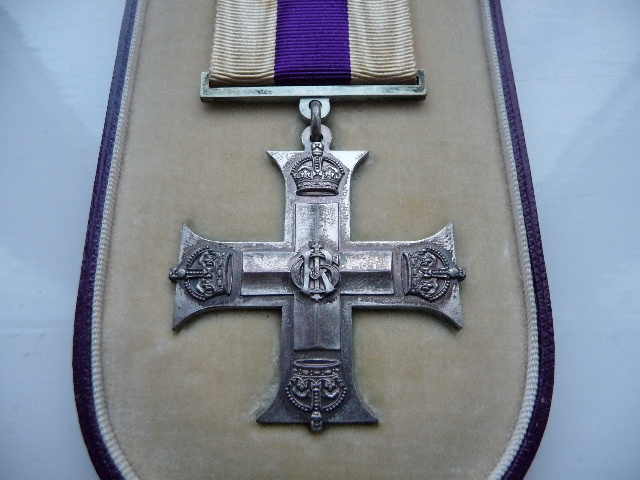 The citation accompanying the award of his Military Cross was published in the London Gazette of 30 March 1916 (Page 3427) and reads: "For Conspicuous gallantry under fire on many occasions, notably when he went out under heavy shell fire to a wagon, which had been hit by a shell and the drivers and horses of which were wounded. While extricating the drivers who had fallen underneath the wagon he was severely wounded by a shell which burst a few feet away."
The citation accompanying the award of his Military Cross was published in the London Gazette of 30 March 1916 (Page 3427) and reads: "For Conspicuous gallantry under fire on many occasions, notably when he went out under heavy shell fire to a wagon, which had been hit by a shell and the drivers and horses of which were wounded. While extricating the drivers who had fallen underneath the wagon he was severely wounded by a shell which burst a few feet away."
An "In Memoriam" article in the Augustine Church Magazine (Edinburgh, April 1916) reads as follows. "It is with profound sorrow that we record the death of our young friend and fellow member Mr Robert Murray, who was seriously wounded near Ypres and died very early on the morning of Friday 25 February before his mother and sister were able to reach him. He lost his life in an act of great gallantry and courage, having left shelter to render aid to a motor which had been struck by a shell. He was wounded in three places, and was carried off the field by his companion. Blood poisoning supervened, and he passed away in full consciousness of his approaching end, bright and happy in death. HM The King, on the recommendation of Mr Murray's superior officer, has awarded him a Military Cross for bravery, but he has gone to receive a higher honour in the royal welcome of his Lord. Mr Murray was a son of the Church, and many of us have seen him grow up from infancy. He took a warm interest in the Church, and was prominent in his services to the Literary Society of the Church. Many of our student friends mourn today the loss of so genial and sincere a companion and friend. He was admitted to our fellowship in 1911 under the Ministry of the Rev Henry Parnaby. Our deepest sympathy goes out to Mrs Murray and her family in their grief."
It must have been very hard for his mother, who had already lost her husband almost exactly 4 years earlier, and whose other son, William, was also away fighting in the war. But she may well have been proud of him too, as he was clearly brave not only on the battle field but also in facing up to his death.
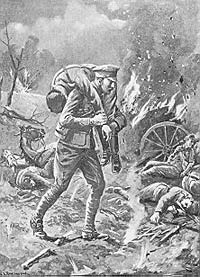
This picture shows the injured Robert Murray being carried on the shoulders of Corporal Francis Vercoe, one of the soldiers under Robert's command. A couple of months before this incident occurred, Corporal Vercoe had been awarded the Distinguished Conduct Medal "For conspicuous gallantry and devotion to duty near Ypres on 29 December 1915, when, under heavy fire of high explosive and gas shells, he left his dug-out and went about 200 yards through a dense cloud of gas to a farm where another battery was billeted and rendered first aid to several wounded men. While he was doing this a bursting shell blew him across the room in which he was working, but he coolly picked himself up and returned to his work." (London Gazette 22 January 1916).
Francis Vercoe's bravery in rescuing Robert earned him a Dated bar for a Second Award of Gallantry. Only 80 dated Bars were awarded in the First World War, five of which went to members of the Royal Artillery. The Bar citation reads "For conspicuous gallantry. He went out with his Officer (Lieutenant Robert Murray) under heavy shellfire and assisted in rescuing the Drivers of a wagon which had been hit by a shell. Drivers and horses being wounded. He and his Officer were then wounded by a shell, the latter very severely. Gunner Vercoe, wounded as he was, carried him back under heavy fire and refused to have his own wounds attended to till he had assisted to dress those of his Officer."
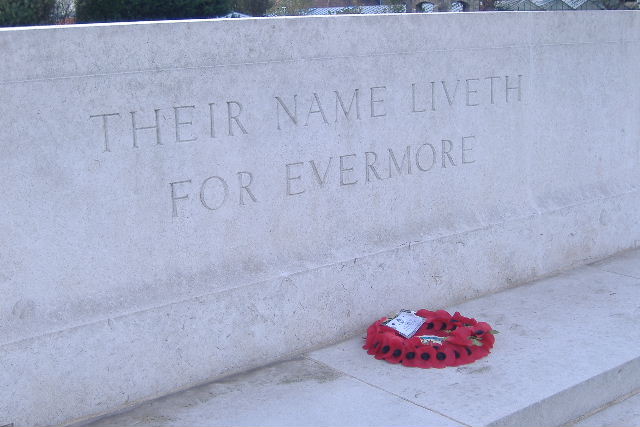
Sadly Robert succumbed to his wounds and died on 25 Feb aged 22. He is buried in Boulogne Eastern Cemetery . From October 1914 Boulogne and Wimereux formed one of the chief hospital areas for wounded allied soldiers. Until June 1918 the dead from the hospitals at Boulogne were buried in the Cimetière de l'Est, one of the town's civilian cemeteries. The British graves form a long narrow strip along the western edge of the cemetery which in its entirety covers over 8,000 square metres. There are nearly 6,000 First World War casualties commemorated here; and 200 more from World War 2.
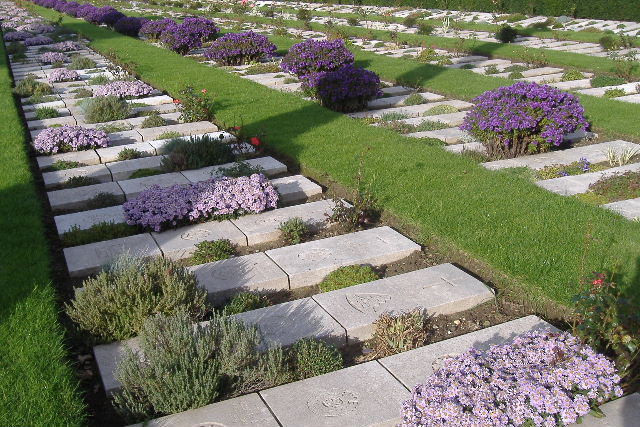
It's a very peaceful place, full of light bird song and fluttering bees and butterflies, and carefully tended by local teams of municipal gardeners who've planted it with red roses, dwarf michaelmas daisies, blue, yellow and silver-leafed rockery plants and scented herbs (particularly thyme).
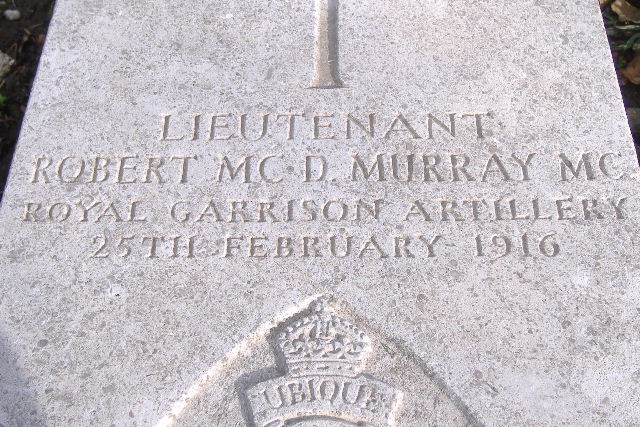
As you enter the cemetery you'll find Robert's grave third in on the front row on the left hand side beside a small strawberry plant. The grave reference is 2 A 3. The engravings on his headstone follow a standard layout. In the centre is the religious emblem of the cross below which are his personal details: rank, name and honours (in his case MC for Military Cross), regiment and the date of death. Also included is his regimental insignia and with its motto: "Ubique quo fas et gloria ducunt" - "Everywhere, where right and glory lead". Finally, families were able to choose their own personal inscription. In Robert's case this task fell to his mother. Documentation shows that the selected wording "Fidelis ad Mortem" - "Faithful unto Death" replaced an earlier draft which read "He was a verray parfit gentil knight" - a quote taken from the Prologue to Geoffrey Chaucer's Canterbury Tales.
As for Corporal Vercoe, he was killed by a shell in Belgium on 4 June 1917 whilst off duty and sitting reading outside his dugout. He was 28 years old and was buried at Underhill Farm Cemetery, Ploegsteert, Belgium. In a letter to his mother his section officer, Lieutenant G Cecil North declared: "I have never known a man more fearless, more keen and more devoted to duty. Nothing seemed to tire him; nothing discouraged him; nothing was ever too hard for him."